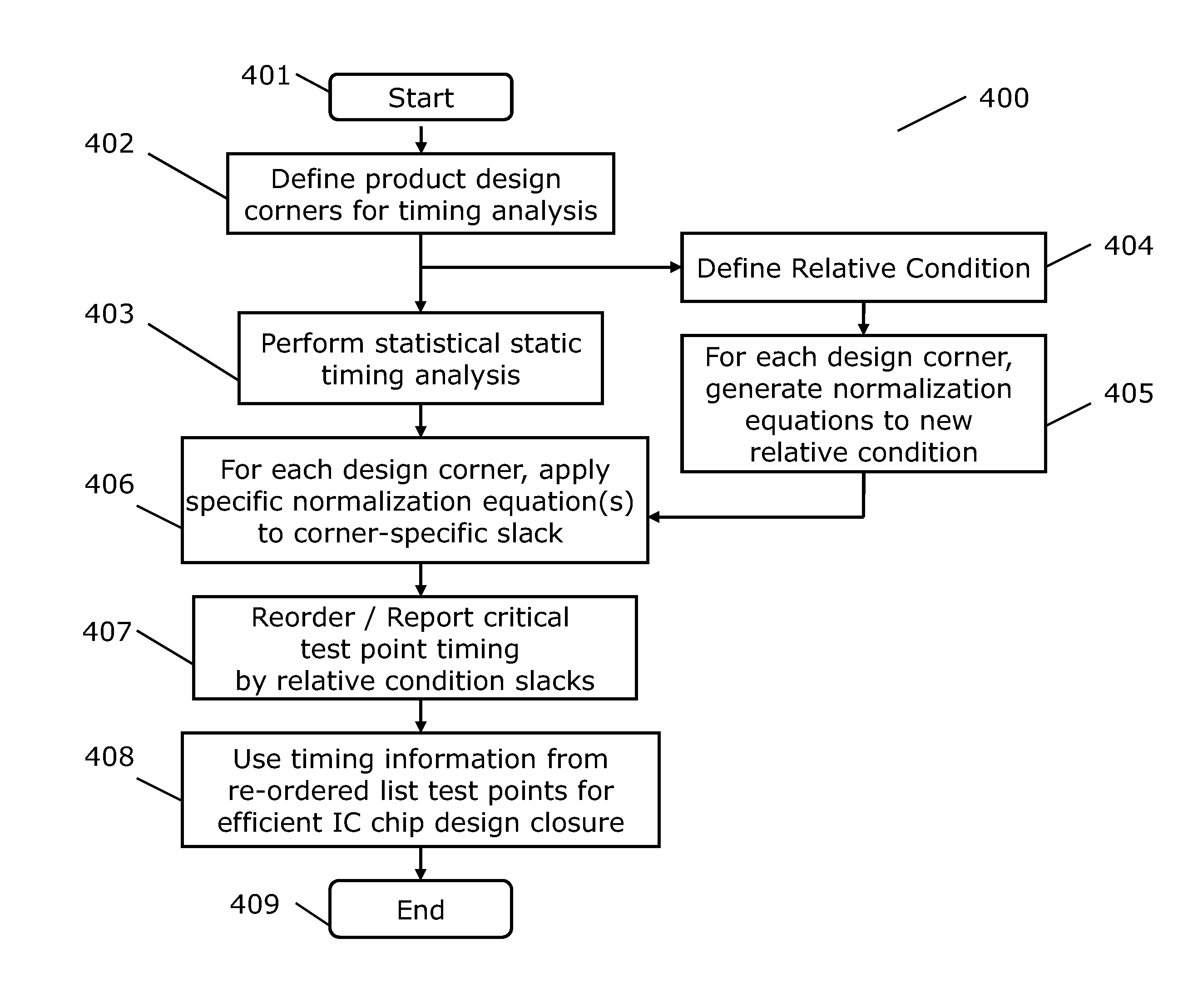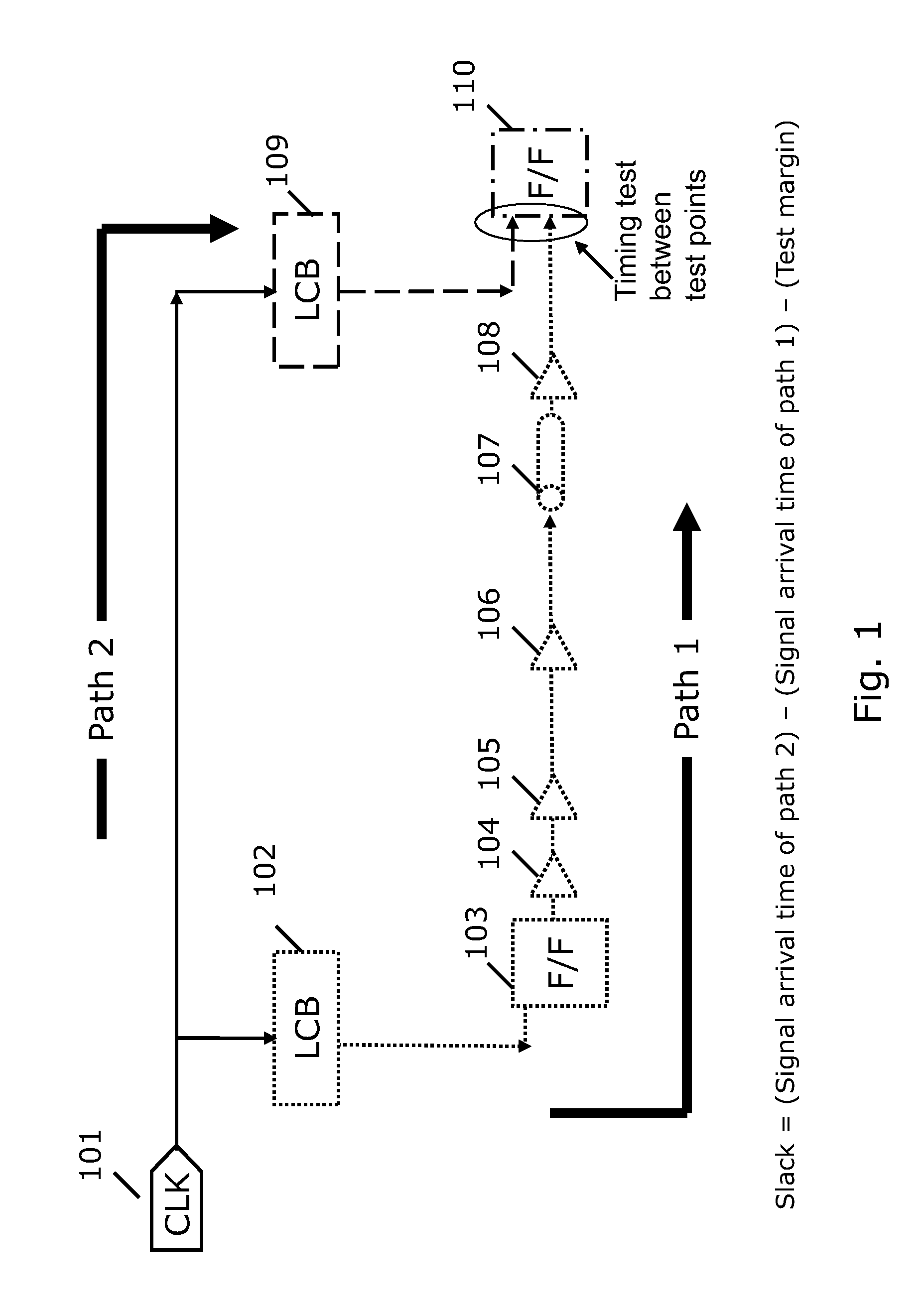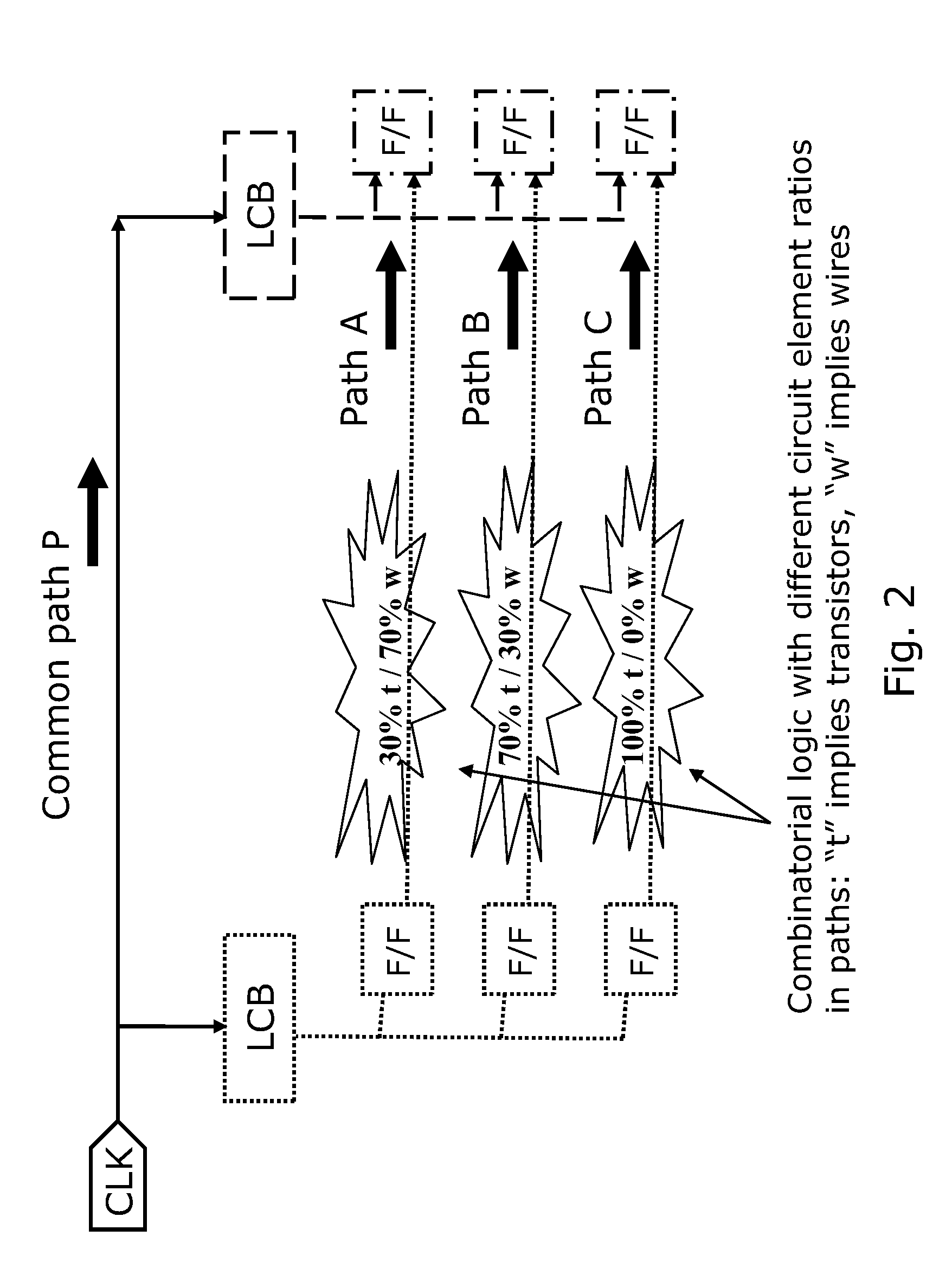Corner specific normalization of static timing analysis
a static timing analysis and corner specific technology, applied in the field of integrated circuit (ic) design, can solve the problems of large device switching delay, large delay, and inability to predict circuit behavior, so as to avoid inefficient circuit solutions or cost greater design effor
- Summary
- Abstract
- Description
- Claims
- Application Information
AI Technical Summary
Benefits of technology
Problems solved by technology
Method used
Image
Examples
Embodiment Construction
[0022]The present invention and the various features and advantageous details thereof are explained more fully with reference to the non-limiting embodiments that are illustrated in the accompanying drawings and detailed in the following description. Descriptions of well-known components and processing techniques are omitted so as to not unnecessarily obscure the present invention in detail.
[0023]Referring to FIG. 4, a flow diagram illustrates an embodiment of method labeled 400 for timing analysis of a given circuit / chip design with alternate normalization.
[0024]The method 400 is initialized in step 401. The design, timing models, and timing assertions are read. In step 402, design corners are defined. Typically, timing analysis results (including slacks) will be validated at these corners. In an embodiment, two design corners, termed Low and High are selected, representing two different voltage conditions. Across the two voltage conditions, the circuit device delays are substantia...
PUM
 Login to View More
Login to View More Abstract
Description
Claims
Application Information
 Login to View More
Login to View More - R&D
- Intellectual Property
- Life Sciences
- Materials
- Tech Scout
- Unparalleled Data Quality
- Higher Quality Content
- 60% Fewer Hallucinations
Browse by: Latest US Patents, China's latest patents, Technical Efficacy Thesaurus, Application Domain, Technology Topic, Popular Technical Reports.
© 2025 PatSnap. All rights reserved.Legal|Privacy policy|Modern Slavery Act Transparency Statement|Sitemap|About US| Contact US: help@patsnap.com



